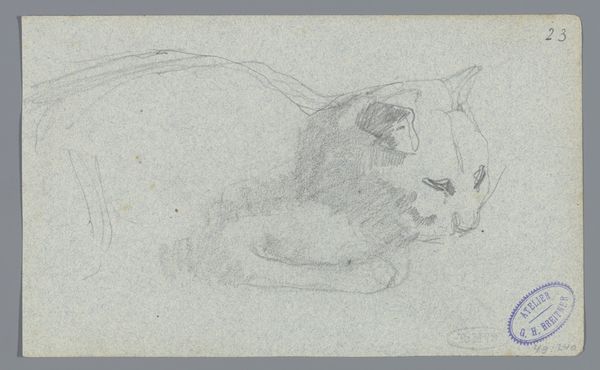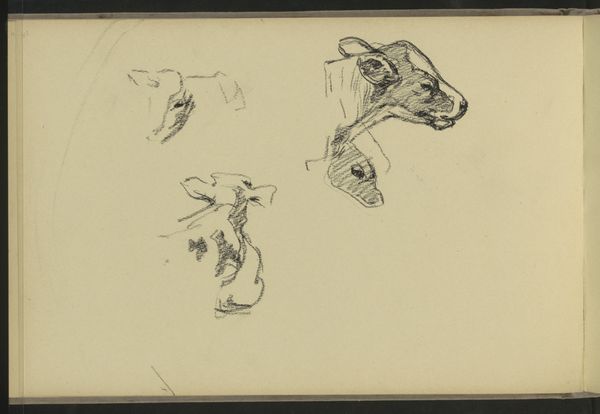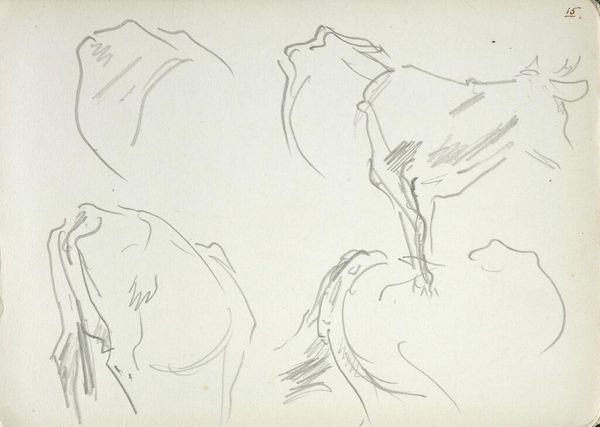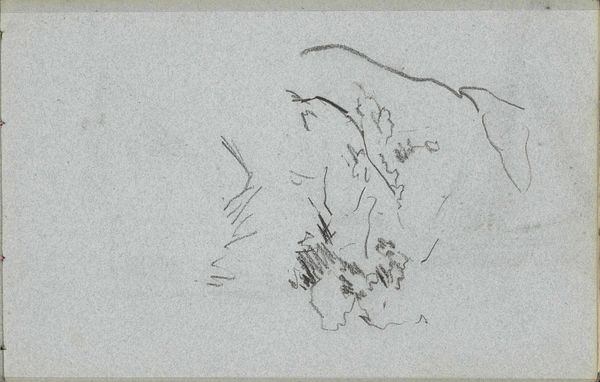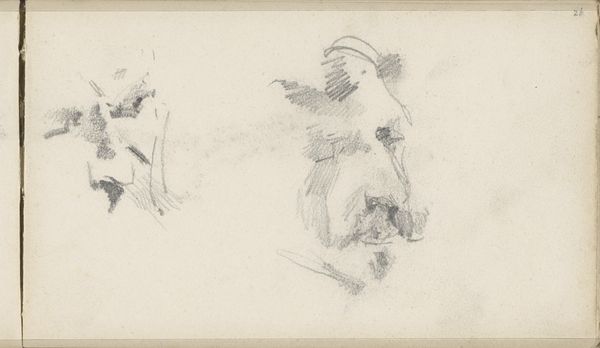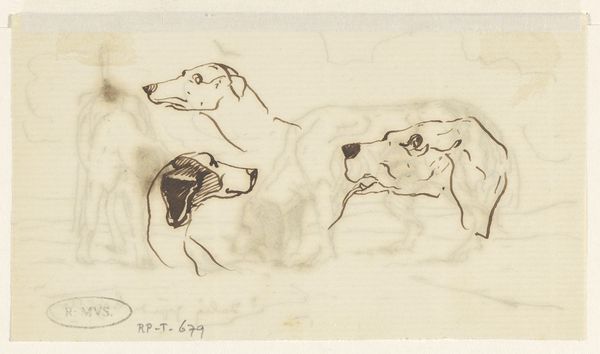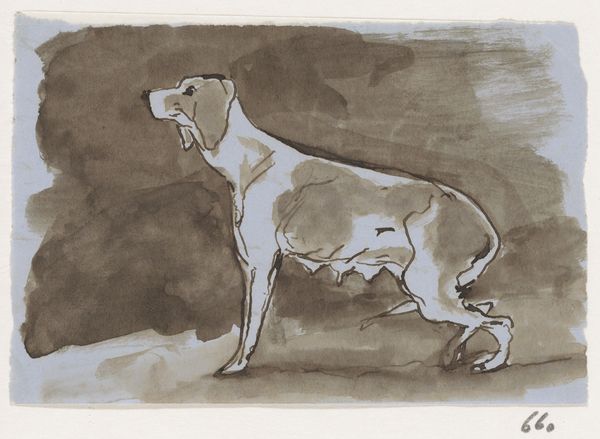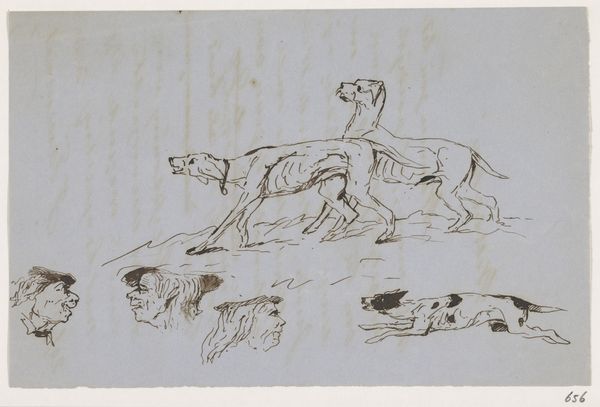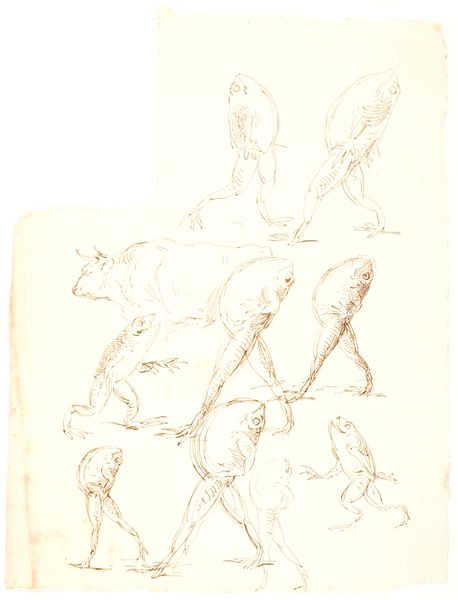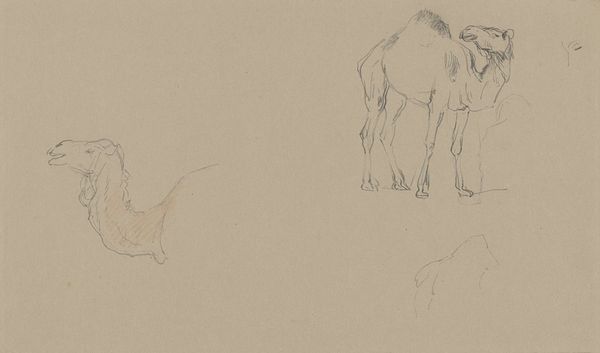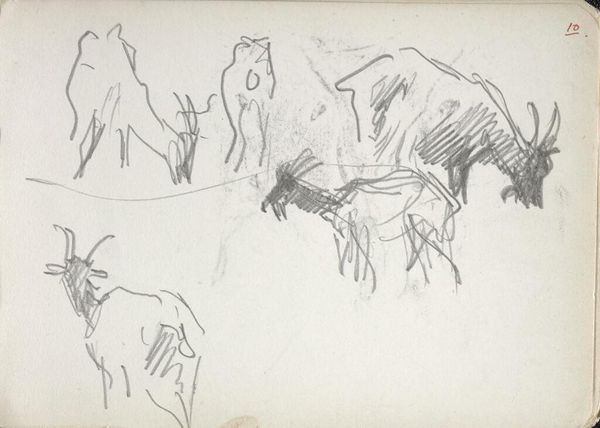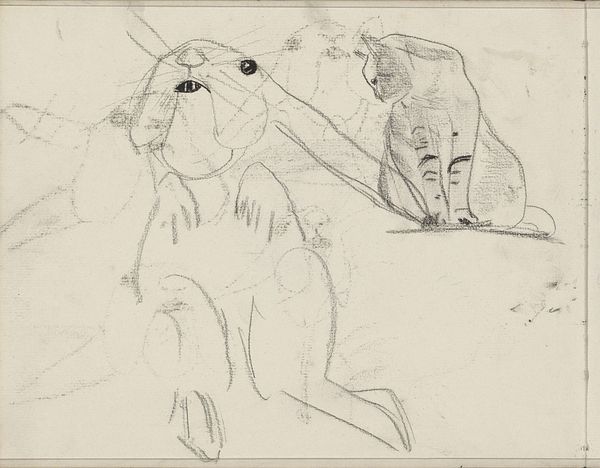
drawing, ink
#
drawing
#
imaginative character sketch
#
light pencil work
#
16_19th-century
#
quirky sketch
#
animal
#
incomplete sketchy
#
personal sketchbook
#
ink
#
idea generation sketch
#
sketchwork
#
ink drawing experimentation
#
sketchbook drawing
#
genre-painting
#
sketchbook art
#
realism
Dimensions: height 77 mm, width 136 mm
Copyright: Rijks Museum: Open Domain
Curator: Looking at this ink drawing by Johannes Tavenraat, titled "Jachthond," which translates to "Hunting Dog," created sometime between 1840 and 1880, I’m struck by its almost ethereal quality. The paper seems to be very thin with water stains. Editor: It's incredible, isn't it? It feels like a fleeting thought captured in ink. The sparseness of the lines, especially on the standing dog, is what gives it that energetic mood, even in such a rudimentary stage. You can see where the artist’s thought process has marked the paper. Curator: Exactly! The Rijksmuseum holds this drawing, reminding us that it likely wasn’t intended as a finished work, but rather something to inform a larger painting. What's fascinating to me is considering how dog breeds rose in popularity within that era, becoming symbols of the aristocracy in painting, specifically around hunting and game culture. Do you get a sense of that class dynamic when you look at the sketchwork? Editor: I do see it, and it’s undeniable, though it’s important to consider that mass print production and affordable paper became more ubiquitous at the same time period, altering access to drawing, which was historically reserved for the elite. While the hunting dog was decidedly still upper class, Tavenraat’s medium allowed a much broader audience to consider fine art and the details of drawing itself. It’s that democratization that stands out for me when considering the date. The drawing doesn’t immediately tell me about that shift in materials. Curator: I agree it's a somewhat tentative shift here. But look closely at the artist's lines: There is real skill embedded in representing a recognizable sporting dog. But, it’s the lack of clear detail that makes the medium more accessible to other aspiring artist. I think its power lies in its suggestion of what elite leisure looks like rather than actually portraying the hunting activity itself. Editor: You know, thinking about the way mass production creates new artistic mediums—even on a subtle scale like this ink drawing, the work also illustrates that those tools always influence what an artist renders and how. Curator: Indeed. Looking at this, I’m compelled to reconsider what constituted "finished art" versus simply "process" in 19th-century artistic practice. Editor: And for me, thinking about the wider distribution of these dogs in artistic life and culture gives new meaning to traditional images of canine companions.
Comments
No comments
Be the first to comment and join the conversation on the ultimate creative platform.

